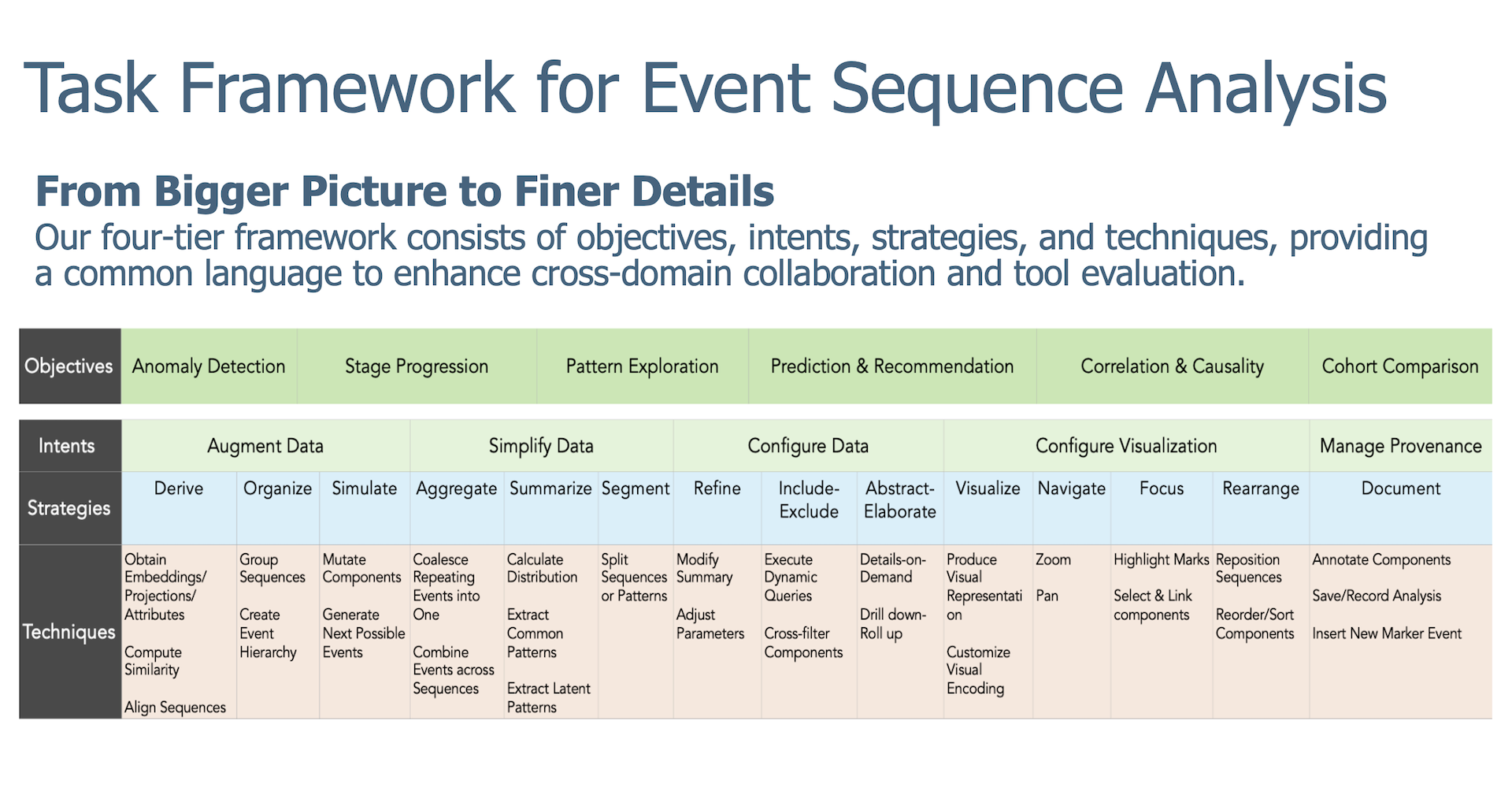A Multi-Level Task Framework for Event Sequence Analysis
Kazi Tasnim Zinat - University of Maryland, College Park, College Park, United States
Saimadhav Naga Sakhamuri - University of Maryland, College Park, United States
Aaron Sun Chen - University of Maryland, College Park, United States
Zhicheng Liu - University of Maryland, College Park, United States
Download Supplemental Material
Room: Bayshore VI
2024-10-16T14:39:00ZGMT-0600Change your timezone on the schedule page
2024-10-16T14:39:00Z

Fast forward
Full Video
Keywords
Task Abstraction, Event Sequence Data
Abstract
Despite the development of numerous visual analytics tools for event sequence data across various domains, including but not limited to healthcare, digital marketing, and user behavior analysis, comparing these domain-specific investigations and transferring the results to new datasets and problem areas remain challenging. Task abstractions can help us go beyond domain-specific details, but existing visualization task abstractions are insufficient for event sequence visual analytics because they primarily focus on multivariate datasets and often overlook automated analytical techniques. To address this gap, we propose a domain-agnostic multi-level task framework for event sequence analytics, derived from an analysis of 58 papers that present event sequence visualization systems. Our framework consists of four levels: objective, intent, strategy, and technique. Overall objectives identify the main goals of analysis. Intents comprises five high-level approaches adopted at each analysis step: augment data, simplify data, configure data, configure visualization, and manage provenance. Each intent is accomplished through a number of strategies, for instance, data simplification can be achieved through aggregation, summarization, or segmentation. Finally, each strategy can be implemented by a set of techniques depending on the input and output components. We further show that each technique can be expressed through a quartet of action-input-output-criteria. We demonstrate the framework’s descriptive power through case studies and discuss its similarities and differences with previous event sequence task taxonomies.